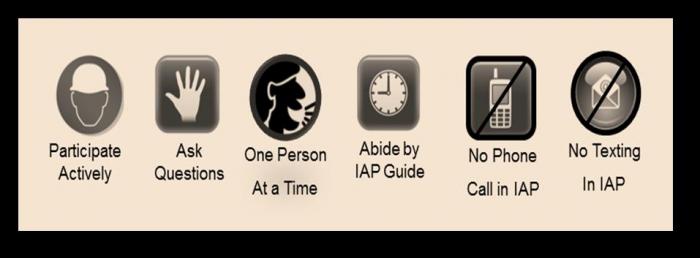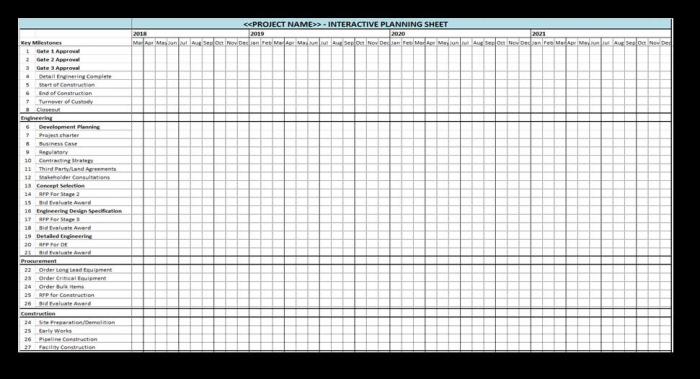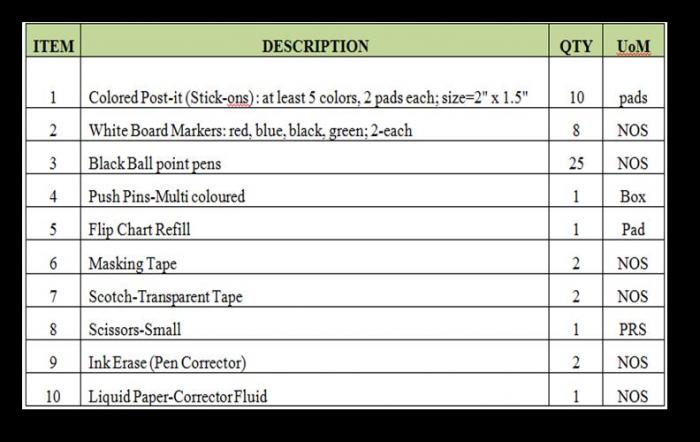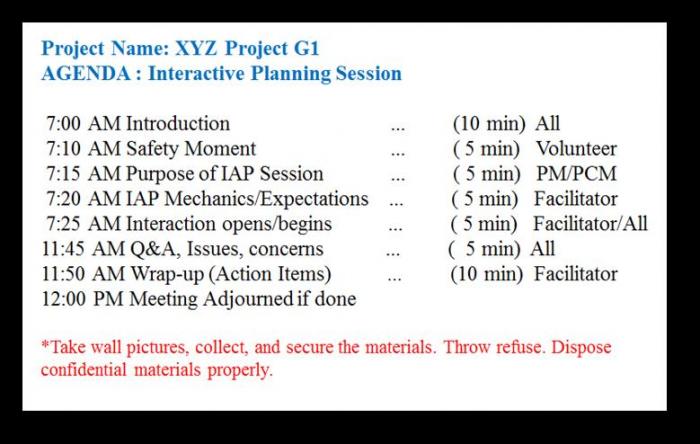Guide to Gate 1 Interactive Planning

Interactive Planning (IAP)
Interactive Planning (IAP) is a methodology used by projects to engage important stakeholders and subject matter experts in a facilitated workshop setting.
The engagement process is through collaborative discussion of project plan and strategy to develop a reliable, complete, and successful project schedule.
Interactive Planning is also widely known as Participative Planning (PP).
It is essential to effective planning and scheduling recommended before establishing schedule baseline at every Gate. IAP (or PP) encourages participation of all key project team members.
Benefits from IAP
The method enhances the project’s knowledge and understanding of scope, opening an opportunity to build realistic and complete schedule. It develops vital conduit of communication, help identifies critical milestones, assumptions, and constraints.
IAP brings project players to one page, promoting scheduling inputs, and buy-ins with less effort. It helps the project manage changes because driving stakeholders are part of the group who conceived the change.
Rules of Engagement

Typical Objectives
Objectives must be clear and specific in order for IAP to work well. Enough time to prepare is necessary to get leader’s expectations. Their expectations play into the formulation of objectives.
The Facilitator is responsible for setting the final objectives of the IAP in collaboration with the leader/s who requested the IAP.
Here are examples of typical objectives:
a) Develop a Gate 1 quality schedule using forward and backward pass duration estimation using early dates.
Caution:
Developing a Gate 1 schedule cannot quickly go straight to a cost-optimal schedule without first coursing through its most likely estimation using the project implementation model (PIM) gated process.
Formulate Gate 1 schedule using PIM normal process before pursuing a cost-optimal schedule or an accelerated schedule. By doing this, the project creates an ad-hoc baseline that will help highlight improvements of the latter.
Jumping to perceived shortcuts, attractive it may seem, will only derail the structured and much better approach to developing Gate 1 schedule.
When asked why he drives relatively slower and follows all the traffic rules; my father-in-law said, “I might look slow but I am sure. I am slow because I am in a hurry.”
b) Develop a Gate 1 quality schedule using forward and backward pass duration estimation using late dates.
c) Use IAP to re-assess target Key Dates of an existing Gate 1 schedule. Identify those that are not achievable.
d) Concentrate more on the tasks that are required to develop complete and detailed Gate 1 and Gate 2 decision support packages as the details around execution will be developed as soon the project establishes with clarity what's being built and what the leading drivers are to the project’s success.
e) Identify risk (threats and/or opportunities) including respective response plan
Important Reminders
The project shall develop all Gate schedules (including Gate 1 Schedule) using the following attributes:
1) have no built-in risk (or has no consideration of any risk)
The project has to develop a schedule without risk.
It has to wait for the right timing on risk quantification. Each Gate, and this includes Gate 1 (if one in command find values to conducting one), shall come up with a baseline that will undergo schedule quantitative risk analysis (SQRA). The baseline will go through some accepted method of quantification, e.g. traditional 3-point duration method, and/or the more recent risk-drivers approach method espoused by experts.
If the schedule has duration with risk built in them, this result is double-dip. The probability and contingency calculation becomes unreliable.Consideration of risk to the schedule occurs during quantitative risk analysis using the qualitative assessment typically found in the Project Risk Register.
2) have durations based on the most likely estimate
It is recommended that duration is built using modal (most likely), median (P50 midpoint), or mean (average) values but tallied to the estimate. It is acceptable for the most likely duration to come from expert opinion, especially in the course to Gate 1 when an official estimate still does not exist.
3) have full complement of qualified resources
In order for the IAP participants to give their inputs unbothered by the thoughts of resource availability, one has to go back and observe attribute 1 of “No risk”! Assuming a full complement of qualified resources will provide the best solution.
4) use logical fast-track parallel activities where applicable
Doing activities in parallel is part of the most-likely model because it is typical of a real-life scenario. A good example is a pipeline installed in three or four parts of two and a half (2.5) kilometers each, starting at the same time or in a quick cascade. The duration of each work package still represents the most likely.
5) be in alignment with the project plan and strategy
A preliminary Project Execution Plan (PEP) starts as the project approach Gate 1, as early as the Project Charter. It is a live document just like all other plans under it until finalized right before the execution stage. The basis of schedule is under the umbrella of the PEP.
6) follow governing project implementation model,
A well-manage project is a result of a good implementation framework, a project implementation model. It establishes the boundaries of the project processes and gives management a good handle of all project elements such as cost, schedule, scope, quality, and risk. It creates a normal starting point before any adjustment to the most likely schedule.
7) has a covering Basis of Schedule (BOS)
Never build a project schedule without a supporting basis and methodology.
It should be a requirement in every Gate disregarding commentaries by some Project Managers how simple the project is.
After all, if the project is simple, and the schedule is simple, then the BOS must be simple.Therefore, preparing the BOS will not take too much effort or too big a cost. Why avoid it?6. Tool = Tabulated Wall Chart
A tabulated Excel file will be enlarged, printed, and attached to the wall of the IAP room. This will be IAP’s working surface.
Normally, only the activities listed on this tabulated wall chart shall be discussed. When members identifies valid activities to be added, the facilitator shall decide whether to include them with concurrence from all participants.
Fonts must be large enough for the participants to see conveniently and confidently from the distance. This must be given attention even if means breaking down the overall rows and columns to more parts.
Typical size is 42” x 60” for each print-out part. The sheets will be taped together and connected on the wall. The way they are connected shall depend on the space and size attributes of the IAP room walls and configuration. A quick visit to the target venue will help in assessing what needs to be done.

Engagement Methodology
A. FACE TO FACE WORKSHOP
The Gate 1 face-to-face schedule development workshop of a relatively large complex project can take from from half a day to one day. The duration will depend upon;
1) How clear the objective of the IAP is?
2) How clear is the Agenda?
Agenda is very important. Never send out an invitation with no agenda and IAP guide. Otherwise, the facilitator (or his assignee) is setting up the IAP for failure.
3) How clear is the advanced guide that was provided to the participants?
4) How much preparation was done before engagement?
5) How much pre-work was accomplished?
6) How knowledgeable the participants are?
7) How long individual participant is involved with the project?
8) How many active participants signed up (or was invited to engage)
9) How much discussions were allowed by the facilitator
10) How prepared everyone are?
11) What tools/materials were used?
12) How effectively the tools and materials were used?
13) … and many other factors.
If the session is plan for the whole day, it is advisable to provide lunch on the same venue, or as close to the IAP room. Dinner is optional.
This prevents participants from straying off course due to distractions. Free-flowing coffee, snacks, and hunger relieving food tidbits are excellent mental sustenance while interaction is going on.
B. REMOTE COLLABORATION
Circumstances that make remote IAP attractive.
1) The number of IAP participants is not more than ten (10).
2) If IAP focuses on one project phase of either engineering (upstream) or construction (downstream).
3) The phase under review has no more than thirty (30) activities in total.
4) Duration of the remote IAP is not less than 5 hours.
5) Participants are relatively far, i.e. point-to-point travel takes more than four hours or half a regular working day.
6) Several participants are unavailable due to side by side calendar commitments.
7) Cutting costs
8) Facilitator not available to travel
9) Expediency and/or urgency
This method will be discussed in a separate article more deeply.
For similar and relevant information about this method, read “Frago, R. (2013).Slideshare.DBM Schedule Development Workshop.Section 12.2/14.2.”
Suggested Materials

Agenda
The Facilitator and his assistant/s must ensure that there is an Agenda and an IAP guide sent to the IAP participants in advance.

Source: Frago, R., 2016.Draft Manuscript.Plan to Schedule, Schedule to Plan. ISBN 978-0-9947608-2-1.Canada
Continue to ... “Recommended Steps to Gate 1 Interactive Planning”
Re-published. Originally published in Wordpress (2015)
Authored by:
Rufran C. Frago – Author (31-Jan-17). Original was written on February 2, 2009.
Related sites:
- E-Touch Up
- My Oil Pro
- Risk-based Management and Services Inc. Facebook
- E-Touch Up (Facebook)
- Your World, Our Risk Universe: Wordpress
- LinkedIn Professional Website
Related articles authored by Rufran Frago.
- Recommended Steps to Gate 1 Interactive Planning
- Risk Relativity
- Phantom Schedules
- Man is the Center of the Risk Universe
- Project Schedule Baseline Top 10 Prerequisites
- Setting Critical Path
- Schedule Critical path
- Primer to Good Schedule Integration
- Project Schedule: P50, Anyone?
- Schedule Baseline Dilemma Part 1
- Schedule Baseline Dilemma Part 2
- Your World, Our Risk Universe
 Printer-friendly version
Printer-friendly version- Login or register to post comments
 Send to friend
Send to friend




